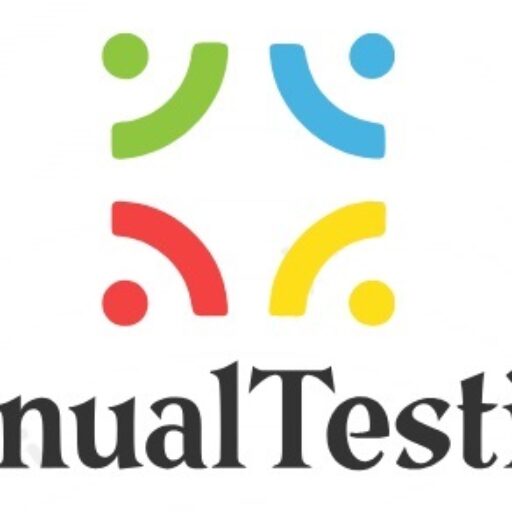Manual testing interview questions for experienced And Freshers

Manual testing interview questions for Freshers:
- Why is Software Testing Required? Software testing is essential because it helps identify and rectify defects or errors in software, ensuring its reliability, functionality, and usability. It ensures that the software meets user expectations, operates correctly, and delivers value.
- What is a test script? A test script is a set of instructions or code used in testing to execute specific tests. It outlines the steps to be followed, including inputs, actions, and expected outcomes, guiding testers through the testing process.
- Explain what software testing is. Software testing involves evaluating a software application to identify any discrepancies between expected and actual outcomes. It ensures that the software meets requirements, functions correctly, and satisfies user needs.
- What are the drawbacks to manual testing? Manual testing, while effective, can be time-consuming, repetitive, and prone to human error. It might not be feasible for large-scale or complex projects, and it can’t match the speed and efficiency of automated testing.
- What is quality control, and how does it differ from quality assurance? Quality control involves activities focused on identifying defects in the final product. In contrast, quality assurance ensures that processes are in place to prevent defects from occurring in the first place.
- What is black box testing, and what are the various techniques? Black box testing involves examining the functionality of a system without knowledge of its internal structure. Techniques include equivalence partitioning, boundary value analysis, decision table testing, and more.
- What is white box testing and its various techniques? White box testing involves examining the internal structure and code of a system. Techniques include control flow testing, data flow testing, path testing, and statement coverage.
- What kind of skills are needed for someone to become a software tester? Software testers require analytical skills, attention to detail, problem-solving abilities, good communication, understanding of testing methodologies, and familiarity with testing tools and techniques.
- What is a test scenario? A test scenario is a detailed outline of a test. It includes the conditions to be tested, the steps to be taken, and the expected outcomes. It’s broader than a test case and encompasses multiple test cases.
- What is a test plan? A test plan is a document that outlines the approach, scope, resources, and schedule for testing. It defines objectives, strategies, test environments, and the roles and responsibilities of the testing team.
- What are the advantages of manual testing? Manual testing allows for exploratory testing, adapts well to ad-hoc changes, and can detect user experience issues that automated testing might miss.
- What is a test case? A test case is a set of conditions or variables under which a tester will determine if a system or application is working correctly. It includes inputs, actions, and expected outcomes.
- What types of manual testing are there? Break them down. Manual testing types include functional testing, regression testing, usability testing, acceptance testing, integration testing, and more, each focusing on different aspects of the software.
- Explain what SDLC is. SDLC, or Software Development Life Cycle, is a process followed for software development, including planning, design, development, testing, deployment, and maintenance.
- What is a test data? Test data is the information used in testing scenarios to execute test cases. It includes input values, expected outcomes, and predefined data to verify the behavior of the software.
Manual testing interview questions for experienced
16. What is the difference between manual testing and automation testing?
Manual testing involves human testers executing test cases manually without automation tools. It’s flexible but time-consuming. Automation testing uses tools to execute pre-scripted tests, faster and repeatedly.
31. What if an organization grows so fast that fixed testing processes are impossible? What to do in such situations?
In such cases, agile methodologies could help. Agile is adaptable and allows iterative development, suitable for evolving environments.
23. What are the phases involved in Software Testing Life Cycle?
Software Testing Life Cycle typically includes Test Planning, Test Case Development, Test Execution, Defect Reporting, and Test Closure.
37. What best practices should you follow when writing test cases?
Test cases should be clear, concise, cover various scenarios, and follow a consistent format for easy understanding and execution.
20. How do you know the code has met specifications?
Code meets specifications when it behaves as expected, fulfills requirements, and passes all defined test cases.
25. What will you do when a bug turns up during testing?
Report the bug, including detailed steps to reproduce it. Prioritize it based on severity and impact, then retest after it’s fixed.
33. What if the software is so buggy that it can’t be tested?
Identify critical areas and prioritize testing. Collaborate closely with developers to prioritize and fix critical issues.
27. Why is it impossible to test a program thoroughly?
Complete testing for all scenarios in a complex system is impractical due to limitless inputs, outputs, and interactions.
32. How will you determine when to stop testing?
Stop testing when the criteria like meeting objectives, time, budget, and sufficient coverage are fulfilled, and when risks are acceptable.
22. What is the difference between system testing and integration testing?
Integration testing checks interactions between integrated units/modules. System testing validates the entire system’s behavior against requirements.
24. How will you overcome the challenges faced due to the unavailability of proper documentation for testing?
Rely on available resources, communicate closely with stakeholders and developers, and prioritize exploratory testing to discover system functionalities.
29. What does defect removal efficiency mean in software testing?
Defect Removal Efficiency (DRE) measures the number of defects found pre-release versus the total number found both pre and post-release, indicating the effectiveness of testing in catching issues.
35. What if an organization grows so fast that fixed testing processes are impossible? What to do in such situations?
Adopting flexible methodologies like Agile can help in adapting to rapid growth and changes, allowing iterative development cycles.


